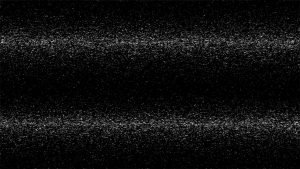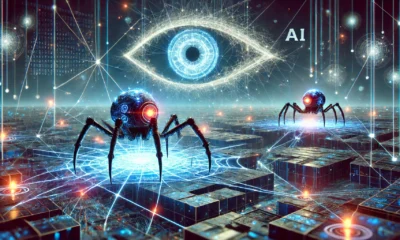Artificial Intelligence
What is Noise in Image Processing? – A Primer

If you’ve ever seen a picture where you notice dust particles that are not part of the actual image, you’re probably seeing ‘noise’ in the image. There are many technical reasons for why this happens. It often obscures the actual image and is the leading cause of image quality degradation in digital image transmission.
This is where image processing offers a robust solution. It provides a wide range of noise reduction techniques, such as spatial filtering, frequency filtering, transformation-based filtering, deep learning-based filtering, etc.
In this article, we’ll explore some key techniques that can be used to reduce noise in images, along with investigating the leading types and causes of image noise. Let’s dive in!
Types of Noise in Image Processing

A simulation of noise variations – Mdf, CC BY-SA 3.0, via Wikimedia Commons
Factors ranging from environmental conditions to the camera’s sensor can introduce noise into the image. The four main types of noise that you usually see in images include:
- Additive Noise: Caused by random variations in brightness or color information across the image. This is the most common type of noise seen in images.
- Subtractive Noise: Caused by the random subtraction of pixel values from the original image, leading to poor image quality, often seen as dark spots or regions in the image. Subtractive noise usually occurs in low-light settings.
- Multiplicative Noise: Caused when the noise value is multiplied by the original pixel value, often resulting in poor image quality around the brighter parts of the image. This is the most difficult type of noise to remove due to significant pixel value variations.
- Impulse Noise: Caused by sudden changes in pixel value that are visible as random black and white pixels seen as sharp disturbances in the image. It is also referred to as ‘salt and pepper noise.’ It results from camera defects, transmission errors, or cosmic rays.
Causes of Noise in Image Processing
Image noise can result from various sources, including:
- Environmental Conditions: External factors such as poor lighting or nearby electronic interference commonly cause noise in images. They can add random variations in images.
- Sensor Noise: Any issues with the sensor used in cameras and scanners can add to noise in images. For example, in poor lighting conditions, if you’re not using a good quality sensor, it can amplify the noise along with the light.
- Quantization Noise: Occurs when analog signals are converted to digital form, particularly in high-contrast images. For example, when you scan a photograph, you’ll often see noise appear in the resulting image. This is quantization noise appearing from image digitization.
- Transmission Noise: Occurs when images are transmitted over noisy channels, be it through networks (e.g., the internet) or stored on noisy storage media (like hard drives).
- Processing Noise: Occurs during image processing operations, such as filtering, compression, etc.
Noise Models in Image Processing

Noise models in image processing serve as mathematical representations of the different kinds of noise that can affect images. These models help understand the occurrence of different kinds of noise through simulations, which in turn helps develop strategies to reduce it.
Some common noise models include:
- Gaussian Noise: One of the most common types of noise models, ‘Gaussian noise’ is characterized by a bell-shaped probability distribution. It simulates random variations found in images. It can stem from sources such as sensor and quantization noise and is similar to the static you often see on TV or a radio signal.
- Erlang Noise: Also known as gamma noise, this is another multiplicative noise model characterized by a gamma distribution. It's typically found in images captured with noisy sensors or transmitted through noisy channels.
- Uniform Noise: This is an additive noise model with a uniform distribution, often observed in quantized images or those corrupted by transmission errors.
Noise Measurement
In image analysis, noise assessment and evaluation is a fundamental task. It involves quantifying the level of noise in an image. This process relies on two primary noise measurement techniques:
- Peak Signal-to-Noise Ratio (PSNR): PSNR serves as a benchmark for evaluating the quality of image reconstruction. It compares the pixel values of the original image to those of the reproduced image, providing a numerical measure of how faithfully the image is reproduced.
- Mean Squared Error (MSE): MSE, in contrast, assesses the differences between the pixel values of two images. This method calculates the average of the squared differences between corresponding pixels in the two images. This quantitative approach helps us understand the extent of noise in an image and its impact on quality.
Common Noise Reduction Techniques
Noise makes images grainy and discolored, obscuring fine details. To neutralize this effect, noise reduction techniques help improve image quality for better outcomes in many domains like photography, security, video conferencing, surveillance, etc. For example, noise reduction is critical for accurate diagnosis and treatment planning in medical imagery.
The noise reduction techniques work best under conditions like low light, high ISO settings, rapid shutter speeds, or when dealing with inherently noisy cameras.
Some common noise reduction techniques include:
- Median Filtering: To eliminate impulse noise, median filtering substitutes the pixel's value with the median values of its nearby pixels.
- Gaussian Filtering: This technique replaces each pixel in an image with a weighted average of the pixels in a neighborhood of pixels around that pixel.
- Bilateral Filtering: This technique combines the median and Gaussian filtering to reduce noise with intact edges.
- Wavelet Filtering: This technique uses the Fourier Transform model to pass image wavelet coefficients to reduce noise.
Applications of Noise Reduction
Noise reduction has a variety of applications across industries, such as image restoration and image upscaling, but the most important ones are:
- Medical imaging: Noise reduction techniques improve disease diagnosis in MRI and CT scans, streamlining patient outcomes.
- Satellite imagery: Noise reduction aids in better object and feature identification in satellite images.
- Disaster management: Noise reduction improves remote sensing images for environmental monitoring and mapping.
- Law enforcement: It enhances clarity in surveillance footage and forensic images for suspect and object identification.
- Space research: Noise reduction cleans astronomical images, enabling the detection of faint celestial objects and fine details in deep space observations.
To read related content, visit Unite AI.










